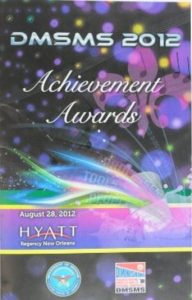Risks of Sourcing EOL’d Embedded Boards Outside the OEM
There are a variety of issues to be faced when your embedded boards have reached end of life (EOL) or been discontinued by the original equipment manufacturer (OEM). Without a […]
There are a variety of issues to be faced when your embedded boards have reached end of life (EOL) or been discontinued by the original equipment manufacturer (OEM). Without a […]
Marvel Comic’s SHIELD (Strategic help Homeland Intervention, Enforcement, and Logistics Division) and, slick as it is, it is more likely to wind up counterfeited than prevent counterfeiting
It is a program devised by a secretive government agency. Its purpose is to organize and motivate the top actors in their fields to come together to prevent crimes that threaten not only the economy but our national security. It focuses its attention on producing cutting-edge technologies. It is SHIELD, and it is becoming a reality.
No . . . no . . . not that SHIELD. That’s Marvel Comic’s SHIELD (Strategic help Homeland Intervention, Enforcement, and Logistics Division) and, slick as it is, it is more likely to wind up counterfeited than prevent counterfeiting. We’re talking about the Supply Chain Hardware Integrity for Electronics Defense program being initiated by DARPA, and rather than placing a series of gigantic floating gun platforms in the upper atmosphere, it’s looking to place tiny 100 micron by 100 micron authentication dielets on all the electronic components used in Department of Defense programs.
With the dialog about counterfeits in the supply chain, it is easy to lose track of what counterfeits actually mean. Yes, they will hurt your business. Yes, they can lead to heavy penalties and jail time, but counterfeits can also lead to jeopardizing lives; a risk that could otherwise have been avoided.
I am always looking for recent numbers and reports to keep the topic fresh and moving forward. But, recently, as I researched my paper for the upcoming SMTA International conference, I’ve come across some new numbers that drives home, once again, how vulnerable everyone is to the issues around counterfeits.
I personally take an average of 2-4 flights every month. According to the FAA, the amount of travel Americans are doing both for business and recreation is increasing. It is projected that the total number of people flying commercially on U.S. airlines will increase from 732 million to 746 million in 2013, and increase to 1.2 billion by 2032. And in 2010 the FAA estimated that some 520,000 counterfeit parts make their way into planes each year.
 Saying that something is “good enough for government work” is often meant as a joke and the reference implies “mediocre work.” The irony is that “government work” is often highly sophisticated; systems are designed and engineered to operate in the most extreme environmental conditions for a very long period of time.
Saying that something is “good enough for government work” is often meant as a joke and the reference implies “mediocre work.” The irony is that “government work” is often highly sophisticated; systems are designed and engineered to operate in the most extreme environmental conditions for a very long period of time.
I recently had the pleasure of having lunch with a talented component engineer who has spent much of his career working in the defense industry. During the course of our discussion I learned that some aviation systems need ICs to operate in temperature extremes ranging from -55°C to 125°C; ground units often travel in harsh environmental conditions (e.g. fighting extreme heat and sand storms in deserts) while being exposed to hostile attacks; satellites traveling through orbit are exposed to protons and heavy ions from solar flares, yet must operate reliably in space.

Managing components at-risk of going EOL requires proactive planning, otherwise critical systems become increasingly at-risk for encountering counterfeits.
Photo by Sebastian Dooris
Managing components at risk of going EOL requires proactive planning. If this vital step is not implemented, critical systems run into increased risk of exposure to counterfeits. Two topics that program managers never want to hear about are counterfeit components, and end-of-life (EOL). While it is possible to come across counterfeit components on active products, this risk can generally be mitigated by implementing smart buying practices, such as purchasing from a franchised distribution line or directly from the original component manufacturer (OCM). Unfortunately, as components go EOL, yet are still needed in critical systems, they become difficult to find and increasingly more expensive. These facts combined with often careless buying practices, leave the embedded supply chain exposed to counterfeit components. These risks only increase as systems age.
Between Section 818 in the NDAA FY12 and the NDAA FY13 Amendment, the defense industry is highly aware of the risks of counterfeit components in the supply chain. As a rule, logistics teams know not to purchase parts off EBay but from authorized sources, or purchase directly from the manufacturer. They know about the SAE standards AS5553 and AS6081 for business processes and they know about guidelines for purchasing and authenticating components.
No matter what your opinion; DNA tagging is currently one of the top methods being discussed to ensure component authentication. The Defense Logistics Agency (DLA) even issued a Request for Information on the subject.
Unfortunately, due to the costs projected and associated with DNA tagging and authentication, few businesses appear to be looking forward to the prospect.
At first glance DNA tagging, like many of the industry’s current solutions, makes sense: increase the complexity of the marks so that counterfeiters are unable reproduce it. DNA would be a “tag” both difficult and expensive to try and recreate. However, DNA tagging and many of the solutions being proposed are “point forward” solutions that, in order to be truly effective, would need to be implemented at the component manufacturing level, not once parts have left the factory floor.
 After our evacuation from New Orleans, we wrote about the part that collaboration played in our experiences. While we focused on how the collaboration mostly focused on safely addressing an incoming hurricane; generally when we talk about collaboration here at GDCA, we’re talking about collaboration in the sense of an integrated supply chain poised to protect the embedded industry from unplanned obsolescence.
After our evacuation from New Orleans, we wrote about the part that collaboration played in our experiences. While we focused on how the collaboration mostly focused on safely addressing an incoming hurricane; generally when we talk about collaboration here at GDCA, we’re talking about collaboration in the sense of an integrated supply chain poised to protect the embedded industry from unplanned obsolescence.
That is why we’re taking a moment to celebrate and announce that DMSMS 2012 is back in the saddle for November 26-29, 2012 in Orlando, Florida.
We know that in the face of obsolescence no one can afford to be isolated in the supply chain. That is why we are pleased to announce that in partnership with Curtiss-Write, IHS, and Rochester Electronics we will be presenting on the realities of cross-industry sustainment: Building an Integrated Supply Chain to Support Warfighter Systems.
Proactive obsolescence management can often be an adventure. I like to think of it as a cross-industry supply chain game of chess. On one side, you have legacy experts like GDCA, with a quarter of a century of experience sustaining legacy systems. On the other side you have counterfeit risk, disruptive technology and time.
This year, we had an additional player when it comes to long-term support adventures: Hurricane Isaac.
“DMSMS” is a defense industry term and you can’t talk about embedded obsolescence management without eventually coming across it. For anyone not familiar with it, it stands for Diminishing Manufacturing Sources and Material Shortages. These shortages can happen due to ongoing disruptive technology (going from NAND to DRAM), environmental disaster (such a flooding in Thailand or the nuclear emergencies in Japan), and plain old EOL. And, because you can’t always predict how obsolescence and end-of-life is going to impact a supply chain, you can imagine that the DMSMS conference is something we at GDCA look forward to every year.
They both get harder to maintain as they get older, and if you don’t plan for obsolescence, they can both fail.
It’s common sense. As things get older, they become more expensive to maintain. For example, an antique car was state-of-the art when it first came out. It performed beautifully, and the parts were easy to find. If it had any real problems, it could be taken into the dealer for repairs. However, now that the car is a classic, it requires a lot more upkeep. In the past, it only needed to be taken in for oil changes and tune ups. Now it needs a new transmission, replacement brakes, a new timing belt and a new radiator… and as time passes, the mechanic can’t even get the parts he needs to fix it.
As the components become harder to find, the odds that your car can even feasibly be repaired get more remote. At first, you might scour junkyards and advertise online, looking for those crucial pieces of equipment, but eventually you will probably end up having to find someone who can reverse engineer or custom build the needed parts for you. And now a part that may have been $300 new is going to cost you hundreds more — if not thousands.
With each transaction, that car gets more and more expensive to fix and maintain, but some cars just can’t be replaced.